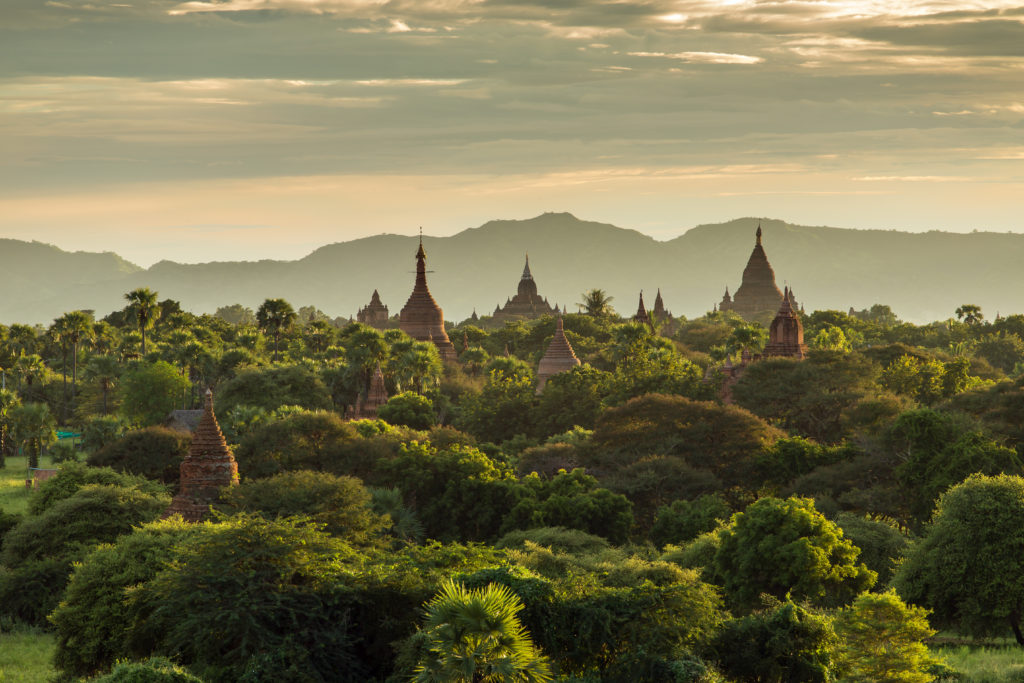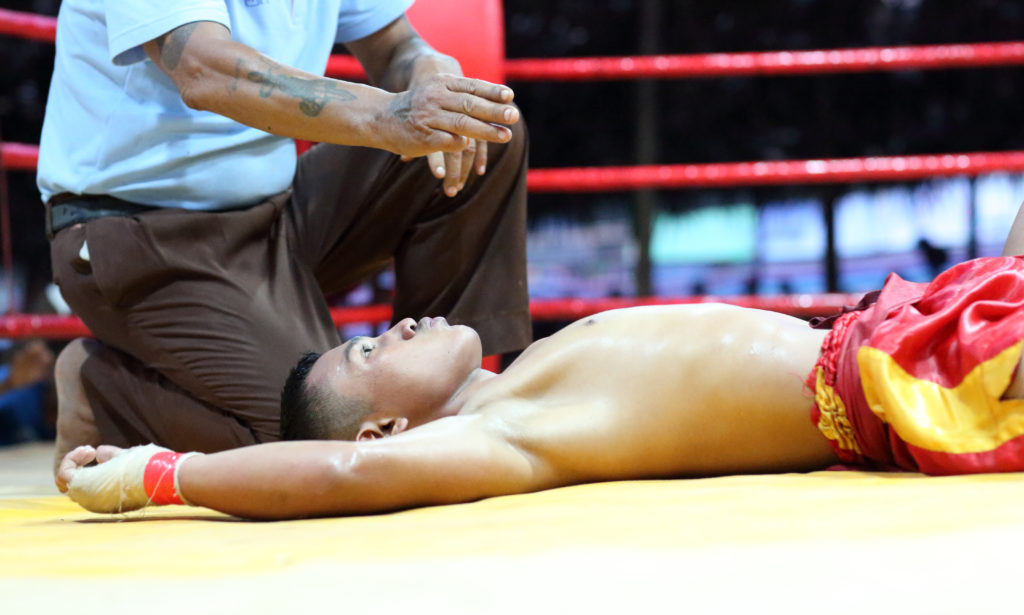Similar to neighboring countries in the South East Asian Region, Myanmar (Burma) has a rich history in the martial arts that were founded in the time of early civilizations and used by warriors in the wars of old.
Lethwei a.k.a Burmese Bareknuckle Boxing or Myanmar Traditional Kickboxing is the ancient boxing style that originated in Burmese martial arts and similar to Muay Boran from Thailand and Khun Khmer from Cambodia, it has become a popular national combat sport.
It is known as the ‘Art of 9 Limbs’ due to the use of the eight limbs (Legs, Hands, Knees, elbows) and headbutts.
Origins of Lethwei
The first known records of competitive matches come from the ancient Pyu Empire.
The early city-states of Myanmar were established around the 2nd Century BC in central Myanmar. Lethwei is depicted in murals in the temple city of Bagan at the time of the Pyu Empire.
The Pyu people of Tibeto-Burman speaking populations migrated South from the present day Yunnan region and are recognized as the earliest inhabitants of Myanmar.
The Pyu Empire was in reigned from ruled from 2nd-century BCE to mid-11th century. It was during this time that Lethwei is thought to have originated and used along with weapons based martial arts by the Myanmar armies in ancient battles with neighboring Kingdoms.

As with Muay Thai and Khun Khmer which have now become popular spectator sports, Lethwei has its origins in ancient warfare and tests of skill and strength by warriors.
History of Burmese Boxing
In ancient times, matches were held in sand pits and were mostly for entertainment and tests of skill and strength between two combatants.
It has also been suggested that this style was practiced was used to keep their warriors fit and in fighting shape during peace time.
Fighters wrapped their hands in hemp or gauze and would fight until one fighter was unconscious or submitted or gave up.
These early Lethwei matches were held with very long rounds and no points systems and thus only a knockout would determine the winner.
In history, Lethwei matches were held during special holidays and festivals and even at funerals. Entertainment and celebrating the Burmese culture and history were the original aims of these matches.
Lethwei was also practiced by warriors for the battlefield and by everyday people as self defense against neighboring Kingdoms who might attack.
Modern Day Burmese Boxing
By the time the British annexed the entirety of the county in 1885, Burmese boxing had become a sport for all with matches held in sand pits in villages across the country.
Following British colonization, the upper class society of Burma shared the British view of Lethwei as barbaric and something for the uncultured.
In the rural villages, however Lethwei continued to be practiced and tournaments held as festivals and funerals of monks. This was especially in the ethnic Mon and Karen regions.

Present day Lethwei with its rules and regulations was pioneered by former 1952 Olympic boxer and Myanmar national icon Kyar Ba Nyein.
Kyar Ba Nyien was also known as ‘Tiger’ Byar Nyien and he was instrumental in introducing a more the modern day rule set, based off Western boxing and Muay Thai established in the 1920’s.
The rules and regulations established by ‘Tiger’ included the modern day ring, referee and judges which have been used since 1953.
Rules of Burmese Boxing
Lethwei is known as the ‘Art of 9 Limbs’ and includes the use of legs, knees, fists, elbows and headbutts.

The common set of rules across the majority of Lethwei organizations are as follows:
- Five 3 minute rounds with 2 minute breaks between rounds
- Lethwei fighters must wear tape on their hands and feet and have a mouth guard and groin guard for each match
- There is no point system in Lethwei. KO is the only way to win.
- If both fighters are standing by the end of the fifth round, the match is declared a draw
- KO timeout – if a knockout occurs, the boxer is revived and has the option of continuing or not. The KO’d fighter is allowed a 2 minute timeout but only one timeout is permitted per fight in a match.
Style of Lethwei
Lethwei differs from muay thai and other martial arts or boxing styles in neighboring countries in that it is a very aggressive and straight forward style compared to the slicker and tricky styles of muay thai such as the muay femur style.
The style is known as being slower but more powerful and unlike muay thai where the first two rounds are slow paced to ‘feel out’ the opponent, Lethwei involves aggressiveness and attack from the outset.
An ancient belief in Lethwei is that the fighter should be the rock that withstands the crashing waves rather than the darting fish that skims through the water.
Similar to muay thai, Lethwei fighters adopt a square stance with hips facing their opponent directly as opposed to the bladed stances of Tae Kwon Do and Karate.
Also similar to muay thai fighters prefer a light lead leg with a bouncing/marching motion with more weight on the back leg to allow for distance control with the lead leg and blocking and intercepting attacks with the lead leg.
However unlike muay thai scoring rules which favor kicks over punches, Lethwei with its aim to KO the opponent favors the use of ‘un-gloved’ punches and elbows and headbutts to look for the KO.
Clinching as in muay thai is also allowed and used in Lethwei to great effect to strike with knees and elbows from the clinch. With no gloves the ability to clinch is greatly improved.
“The philosophy of Lethwei is to be humble like a lamb in normal life, but to be brave like a lion in the ring,”, These are the words of a famous Lethwei teacher, Win Zin Oo.
Popularity of Lethwei Today
Lethwei today as a modern competitive sport is more marketable to the international community.
With modern rules and regulations that promote safety and the introduction of judges makes the sport more palatable for spectators around the world.
Lethwei became truly international in 2001 when three kickboxers from the USA fought Burmese boxers. One of these USA kickboxers was Doug Evans, a MMA veteran who fought in the UFC and Bellator.
All three Americans were finished in the first round.
In 2004, four Japanese fighters battled local Burmese fighters and MMA fighter Akitoshi Tamura became the first foreigner to defeat a Burmese boxer, Aya Bo Sein with a second round KO.
Today, Lethwei is still relatively unknown compared to muay thai but it has truly gone mainstream with ever growing popularity across the globe. International matches are being stages with evens showing popularity in Japan and Russia particularly.
Lethwei also has a global ambassador in French-Canadian Dave “The Nomad” Leduc who competes in the World Lethwei Championship (WLC). He is the current openweight Lethwei World Champion and current WLC Cruiserweight World Champion.
It remains to be seen if Lethwei will grow in popularity to the heights and fame of muay thai, but with an ever increasing fan based and more and more foreign fighters taking up the challenge, Lethwei is sure to keep growing around the world.



